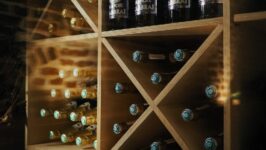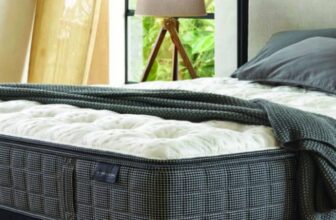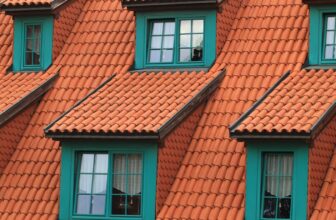
Essential Considerations for Building a Wine Cellar in Your Home
Wine collecting is not just a hobby; it’s a passion. For many enthusiasts, having a dedicated space at home to store and showcase their collection becomes an aspiration.
Building a wine cellar involves much more than stacking bottles in a cool corner of the house.
Location and Space
Selecting the Right Location
Choosing the right spot in your home for a wine cellar is akin to choosing a home itself; it demands foresight and thoughtful consideration.
The location is pivotal not just for aesthetic reasons, but for the longevity and quality of your wine collection.
Consistent Temperature
- Why it’s Important: Wine’s composition makes it acutely sensitive to temperature variations. Any inconsistency can affect the wine’s aging process, altering its taste and aroma.
- Optimal Range: A temperature bracket of 55°F to 58°F is often recommended by wine experts.
- Best Locations: Basements are a prime choice for many homeowners due to their inherent coolness and less exposure to external temperature changes. If a basement isn’t an option, consider spots away from heat sources, like kitchens or rooms with large windows.
Away from Direct Light
- The UV Threat: Sunlight, especially its UV component, can prematurely age wine. Over time, continuous exposure can break down complex molecules that give the wine its flavor.
- Solutions: If your preferred location has windows, consider UV-filtering window films or blackout curtains. For interior lighting, LED is the best choice since it emits minimal UV rays.
Accessibility
- Frequency of Use: If you frequently entertain guests or enjoy nightly wine sessions, having your wine cellar in or near your main living area is convenient.
- Safety: For those with young children, placing the wine cellar in a less accessible area with lockable doors might be safer.
- Showcasing: An avid collector might opt for a central location, turning the wine cellar into a conversation piece, while those who view it more functionally might choose a more discreet location.
Determining Cellar Size
The spatial dimensions of your wine cellar go beyond mere aesthetics; they dictate its functionality.
Storage Capacity
- Current Collection: Take an inventory of your current wine collection. It’s not just about the bottles you have now but those you’ll acquire.
- Anticipated Growth: Consider your purchasing habits. If you often travel to vineyards or are part of wine clubs, your collection could grow rapidly. Plan for the future, leaving room for expansion.
Display Needs
- Showcase Worthy Bottles: If you own rare, vintage, or sentimental bottles, you might want a dedicated display area. This could be a raised platform, a central island, or even wall-mounted displays.
- Function vs. Form: Some wine enthusiasts prefer a minimalist design focusing only on storage, while others turn their cellars into thematic or decorative spaces. Assess whether you’d like additional space for art, furniture, or tasting areas.
By carefully evaluating both the location and size of your wine cellar, you set a strong foundation for the subsequent stages of design and construction. Your wine collection deserves a space that’s not just beautiful but tailored to its preservation needs.
Climate Control
Wine is not just a beverage but a living entity that evolves over time. Its maturation, aroma, and taste are intricately tied to the environment it’s stored in. Thus, creating the perfect climate within your wine cellar is of paramount importance.

Importance of Proper Temperature and Humidity
The longevity and taste of wine hinge largely on maintaining the right climatic conditions within your wine cellar.
Temperature Stability
- Why it Matters: Fluctuating temperatures can accelerate the aging process, potentially ruining a wine’s character and bouquet.
- The Ideal Range: Most wines thrive between 55°F and 58°F. While minor fluctuations are tolerable, rapid changes can be detrimental. When wine undergoes frequent temperature shifts, it can expand and contract inside the bottle, which might compromise the seal, leading to potential leaks or oxidation.
Optimal Humidity
- The Sweet Spot: Aim for a relative humidity level between 60% and 70%. This range strikes a balance, ensuring corks remain supple without promoting mold growth.
- Dryness Dangers: Low humidity can dry out corks, allowing air to seep into the bottle leading to wine oxidation.
- Excess Moisture: On the other hand, excessive humidity can foster mold and mildew, damaging labels and potentially affecting the wine’s taste.
Investing in Wine Cellar Cooling Units
A wine cellar’s climate isn’t just about ambient home conditions but necessitates specialized equipment to maintain consistency.
Type of Cooling Unit
- Self-Contained Systems: These are essentially “plug and play.” They are easier to install but might not be suitable for larger cellars.
- Split Systems: These divide the evaporator and condenser between the inside and outside of the cellar, allowing for more flexibility in installation and better efficiency.
- Ducted Systems: Ideal for larger cellars or when you want to keep the cooling unit entirely out of sight. They can be more complex to install but offer the advantage of quiet operation and optimal space utilization.
Energy Efficiency
- Long-Term Savings: While energy-efficient models might have a higher upfront cost, they can lead to substantial savings in the long run.
- Environmental Considerations: An energy-efficient unit reduces carbon footprint, making it a greener choice.
Noise Level
- Assess Your Tolerance: If your wine cellar shares a wall with a main living area, a quieter unit might be worth the investment.
- Insulation and Vibration: Beyond noise, also consider units that minimize vibration, as excessive vibration can disturb the wine’s sediment.
The investment in a good wine cellar cooling unit goes beyond mere temperature control; it’s about curating an environment where your wines can age gracefully, preserving their character and nuance for years to come.
Design and Aesthetics
Choosing Wine Racks
Wine racks not only store your bottles but also contribute to the overall aesthetics:
- Material: From traditional wooden racks to modern metal ones, choose a material that complements your home’s interior design.
- Configuration: Depending on bottle sizes (standard, magnum, or oversized), ensure your racks can accommodate your collection. Also, consider if you prefer horizontal, vertical, or diagonal displays.
Enhancing Ambiance with Lighting and Decor
The ambiance of your wine cellar can enhance the wine tasting and selecting experience:
- Lighting: Soft, ambient lighting accentuates the colors of wine bottles. LED lights are popular as they emit minimal heat.
- Decor: Incorporating art, vintage wine posters, or even a tasting table can add character to the space.
Security and Maintenance

Ensuring Security
For those with rare and expensive collections, security becomes paramount:
- Locks: Install a robust locking system on the wine cellar door.
- Alarm System: Consider integrating the wine cellar into your home’s security system.
Regular Maintenance Checks
Like any specialized space, wine cellars require ongoing care:
- Regular Inspections: Periodically check for mold, pests, or any signs of temperature or humidity fluctuations.
- Cleaning: Keep the cellar clean to avoid contaminants that could harm the wine or the storage system.
Takeaway
Building a wine cellar in your home is a rewarding venture for wine aficionados. By considering the location, climate control, design aesthetics, and security, you can create a sanctuary for your prized bottles.
Investing time and resources into this project ensures not just the longevity of your collection but also a delightful space to enjoy wine for years to come.
Whether you’re showcasing a few cherished bottles or housing a vast collection, a well-thought-out wine cellar is the epitome of luxury and function intertwined.



















































































